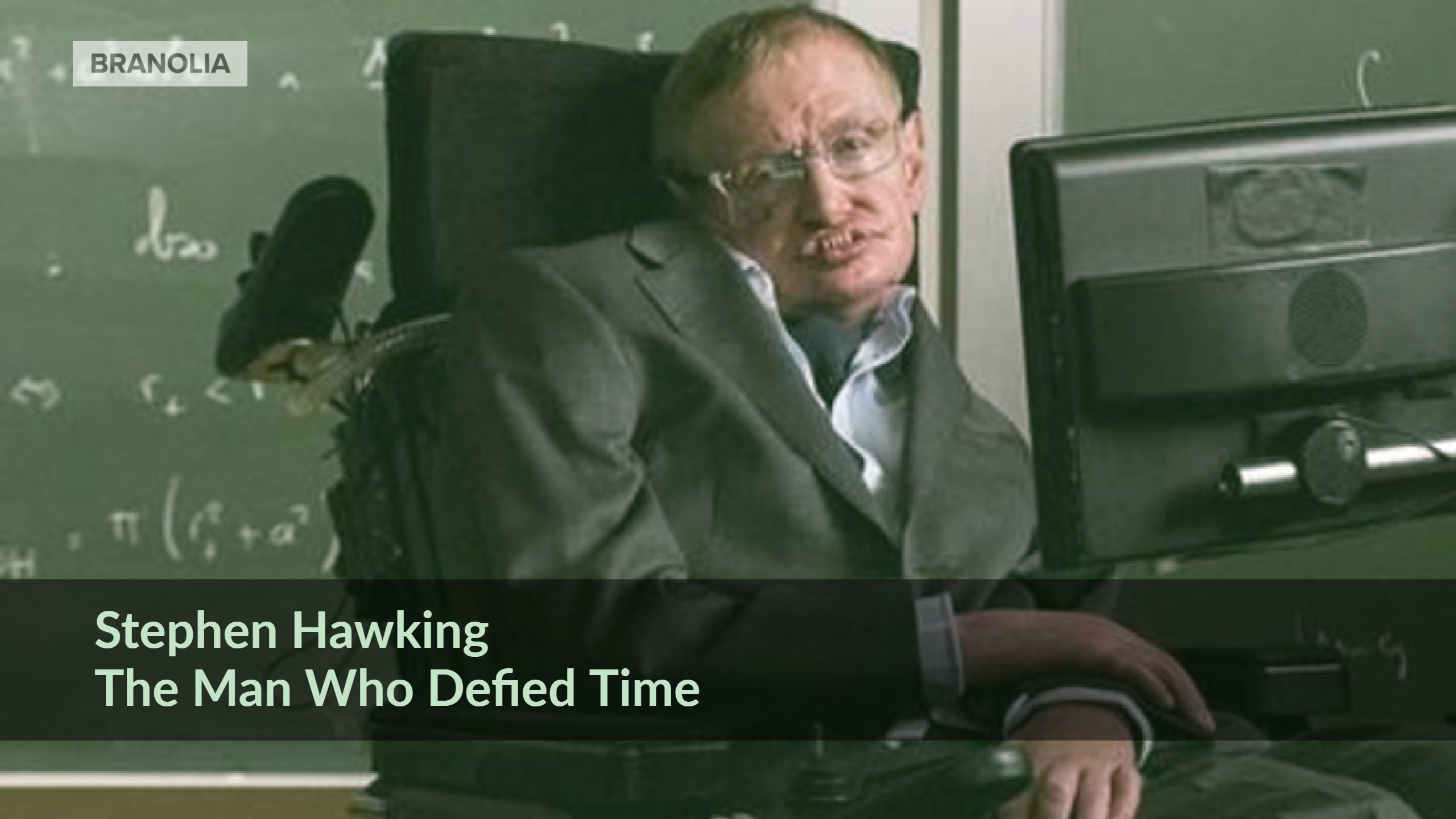Stephen Hawking: The Man Who Defied Time

A 21-year-old doctoral student at Cambridge was diagnosed with a rare motor neuron disease. The student went into a depression, finding no point in continuing his research. Aided by his professor and thesis guide, the student who was barely able to stand and had a slurred speech restarted his work. The student not only survived but became a legend.
The student was Stephen Hawking, undoubtedly one of the most brilliant minds in theoretical physics in the 20th century and the thesis guide was Prof Dennis William Sciama, one of the founders of modern cosmology. Prof Sciama would often tell his student “Well, you’re not dead yet. So, are you ready to work on that problem I suggested?” The rest, as they say, is history.
Much later in an interview, Hawkings would remark, “I have lived with the prospect of an early death for the last 49 years. I’m not afraid of death, but I’m in no hurry to die. I have so much I want to do first”.
Stephen Hawkings died on 14 March 2018 at the age of 76, not before his insights shaped modern cosmology and inspired global audiences. He lived up to the promise he had made to himself “My goal is simple. It is a complete understanding of the universe, why it is as it is and why it exists at all.”
Hawking’s first major breakthrough came in 1970 when he and Roger Penrose applied the mathematics of black holes to the entire universe and showed that a singularity, a region of infinite curvature in space-time, lay in our distant past: the point from which came the big bang.
In another seminal work in 1974, Hawkings demonstrated that black holes emit radiation, known today as Hawking radiation. This discovery was initially received with skepticism; however by late 1970s when more research corroborated the findings, Hawkings was credited with one of Physic’s greatest discovery. Hawking was elected a Fellow of the Royal Society (FRS) in 1974, a few weeks after the announcement of Hawking radiation. At the time, he was one of the youngest scientists to become a Fellow at age 32.
However as his discoveries lead to medals and recognition, these did not go a long way in improving his financial condition. His own disease and the bringing up of his family of three kids and wife, he decided to write a popular book about the universe for the general public. The book Brief History of Time was published in 1988 and went on to be a best seller, selling 9 million copies. The book also made him a celebrity.
In 1970, Hawking was appointed to the Sherman Fairchild Distinguished visiting professorship at the California Institute of Technology (Caltech). In 1977 he was appointed a professor with a chair in gravitational physics at Cambridge. Subsequently, Hawking was elected Lucasian Professor of Mathematics at the University of Cambridge which he continued till 2009. Since then he held the position of director of research at the Cambridge University Department of Applied Mathematics and Theoretical Physics.
Other than superb Physics, Prof Hawking redefined what human will achieve. The diagnosis of motor neuron disease came in 1963 when Hawking was 21. At the time, doctors gave him a life expectancy of two years. In the late 1960s he slowly lost his ability to write and had to use crutches to walk. Fiercely independent, Hawking initially refused the use of wheelchair however conceded after much persuasion. By late 1970s his speech began to fail and those only close to him could understand what he spoke. In mid-1985 Hawking contracted pneumonia and a tracheotomy had to be done which meant complete loss of speech. Undefeated by the circumstances, Hawking developed a system wherein he would indicate the letter through raise of his eyebrow and thus help construct words and sentences. In 1986 he received a computer program “Equalizer” from Walter Woltosz. Hawking could now simply press a switch to select phrases, words or letters from a bank of about 2,500–3,000 that are scanned. On successfully using the Equalizer, the ever-positive Hawking commented: “I can communicate better now than before I lost my voice.”
Hawking gradually lost the use of his hand, and in 2005 he began to control his communication device with movements of his cheek muscles, with a rate of about one word per minute. Intel sent some of its best computer programmers and scientists to develop a system that could translate his brain patterns or facial expressions into switch activations. After several prototypes, they settled on an adaptive word predictor based on technology developed by London-based startup SwiftKey.
By 2009 Hawking could not drive his wheelchair and near the end of his life, he was experiencing increased breathing difficulties. Since 1990s Hawking was a relentless campaigner on rights of the disabled. In August 2014, Hawking accepted the Ice Bucket Challenge to promote ALS/MND awareness and raise contributions for research. As he had pneumonia in 2013, he was advised not to have ice poured over him, but his children volunteered to accept the challenge on his behalf.
He joined Tesla’s Elon Musk and Apple co-founder Steve Wozniak to warn against an artificial intelligence military arms race and called for a ban on autonomous weapons.
One of India’s most celebrated Physicist Dr. Ashoke Sen was nominated for the Royal Society by Stephen Hawking. Another Indian scientist way back in 2004 was perhaps the first to openly challenge Stephen Hawking theories. Dr. Abhas Mitra, at the Bhabha Atomic Research Centre (BARC) in Mumbai, demonstrated fallacies in the information loss paradox theory pertaining to Black Holes put forth by Hawking. Another celebrated Indian Physicist, Prof Jayant Narliker, and Prof Hawking during their student days used to share the same office at Cambridge. Hawking publicly challenged the work of Fred Hoyle and his student Jayant Narlikar at a lecture in June 1964.
The physicist passed away peacefully at his home in Cambridge, leaving behind the world astounded on how much he could achieve. He leaves three children, Robert, Lucy, and Timothy, from his first marriage to Jane Wilde, and three grandchildren.
Branolia Chemical Works mourns the death of this brilliant physicist and an extraordinary human being, who taught us how to challenge difficult times.
[supsystic-social-sharing id="1"]

